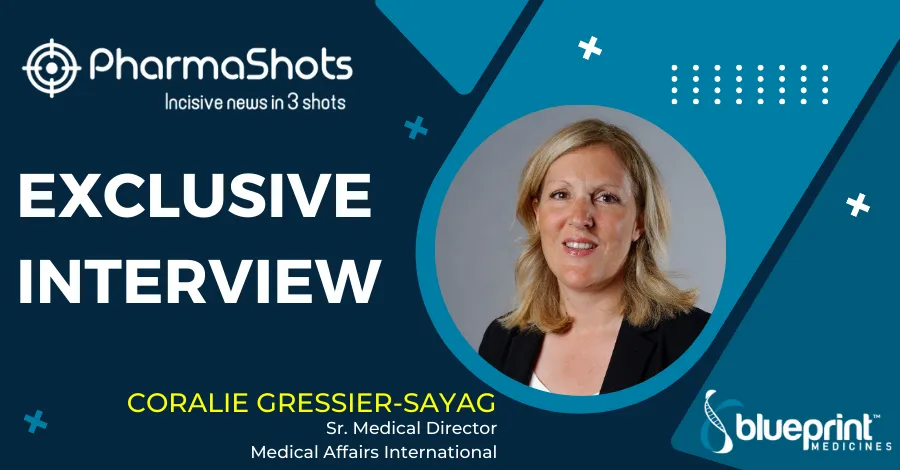
Shmulik Shapiro, EVP of Business Development & Strategy at RSIP Vision Shares Insight on New AI Tool for Prostate MRI Analysis that Supports PI-RADS Scoring
Shots:
- Shmulik spoke about the key features and development of the new AI tool for Prostate MRI Analysis
- Shmulik emphasized the significance of this new tool in PI-RADS score and how this can be helpful in diagnosing prostate lesions in MRI
- The interview provides a deeper understanding of medical imaging technologies that are emerging through AI
Smriti: Thank you so much for connecting with us, would you please start by discussing the key characteristics of RSIP Vision’s new AI tool for Prostate MRI Analysis?
Shmulik: The basic MRI scan has done a good job in providing detailed images of the prostate gland. But more information can be obtained from these images to determine whether tissue characteristics indicate the presence of cancer. That’s what the Prostate MRI Analysis tool from RSIP Vision does. It uses AI to facilitate the segmentation of the prostate, its sub-sections, as well as lesions. The tool specifically focuses on analyzing the lesions in detail. All of the information is then used as a starting basis for calculating the PI-RADS score. Short for Prostate Imaging and Data System, the score is used by radiologists to diagnose the possible presence of cancer in the prostate.
If the patient is diagnosed with prostate cancer, our tool can help in the management of the condition. It is common to perform follow-up scans in cancer patients. Our PI-RADS assistant compares lesions from previous scans and presents the differences to the radiologist, providing a map of how the lesion is growing, or whether it is withering, or if it is stabilizing. This information can be useful in helping both health providers and patients arrive at prudent treatment decisions.
Smriti: How does this tool develop an accurate segmentation of the prostate, its various zones, and suspicious lesions?
Shmulik: The tool leverages AI algorithms to segment the prostate into several zones. These include the transition zone (TZ) and the peripheral zone (PZ). Additionally, the tool sections the prostate lesions (a key area for detecting cancer) which can be very complex to analyze by itself. The tool tackles this complexity by examining the lesions across five key measures. Thus, we focus on the lesion’s dimensions, volume, intensity, restriction, and edge smoothness.
Smriti: How does the MRI analysis tool help provide a baseline for the PI-RADS score, a metric used for finding correlations between a prostate's lesions features and prostate cancer?
Shmulik: The MRI analysis tool serves as a sort of assistant to the PI-RADS measure by automating the segmenting process when looking at the prostate, its transient zone, peripheral zone, and lesions. Each of these descriptive parameters corresponds to a different score representing suspicious features for prostatic cancer.
“PI-RADS score was developed to help standardize reporting and bring more alignment between the assessment of one clinician from the other”
Smriti: What is the significance of the PI-RADS score in diagnosing prostate lesions in MRI?
Shmulik: Advances in technology have elevated MRI to help detect, localize, and quantify risk when assessing for prostate cancer among patients. However, certain obstacles in the use of MRI exams for this purpose have been recognized. Among these have been a disproportionate number of variations in the reporting and interpretation of these exams. Thus, the PI-RADS score was developed to help standardize reporting and bring more alignment between the assessment of one clinician from the other.
Calculating the PI-RAD score is time-consuming and highly depends on the image quality and the radiologist’s experience. Moreover, the PI-RADS score helps in standardizing the terminology while also helping radiologists focus on definite characteristics when examining suspicious lesions. It provides a structured reporting plan that, once followed, gives clinicians a clear path for scoring the likelihood that these lesions indicate the presence of cancer. The lesions are scored on a scale from 1 to 5, 1 indicating very low probability of it being present and 5 indicating high probability.
Smriti: How does it help in reducing the amount of time the radiologist arrives at this score manually while lowering the misdiagnosis rate?
Shmulik: Without the tool, most radiologists manually arrive at the PI-RADS, and it can be a time-consuming process. The Prostate Analysis tool automates that process. Moreover, because it is done manually, there is a substantial amount of inter-observer variability. RSIP Vision’s PI-RADS assistant provides more objective analysis of the scans by using measurable statistics to improve scoring accuracy.
“We are helping doctors do their work more efficiently— from diagnosis, treatment, or surgery planning, our tools help facilitate these processes”
Smriti: What makes you work on the application of computer vision in medical imaging?
Shmulik: The application of computer vision, which simply refers to any computer program or automated algorithm that analyzes an image and extracts information, has endless uses for medical imaging technology. Medical imaging is such a powerful tool for physicians to get a precise read of targeted areas before and during complex procedures. It's a guide to inform their actions and decisions to ensure they're working with as much precision as possible.
Through our work of developing advanced learning algorithms for these applications, we’re able to enhance the ability for surgeons to extract information from these images. Whether by providing a 3D rendering of a patient’s anatomy or by directing what procedure will best fit the patient’s needs, we are helping doctors do their work more efficiently— from diagnosis, treatment, or surgery planning, our tools help facilitate these processes. We have a proven track record of helping physicians and patients in various medical fields through our clinical-grade technology. We take pride in being a leading incubator for pushing the boundary of what's possible in the medical applications of AI.
“We’ll continue to work with medical advisers, including cardiologists and radiologists, to bridge the gap between understanding the needs of the medical field and what capabilities are already created”
Smriti: That sure is a great initiative! What are your upcoming plans for innovating medical imaging through AI/ML?
Shmulik: As a global leader in driving AI solutions for medical imaging, we’re excited about what we have in store for the future. Our team, composed of algorithm experts, radiologists, and computer science engineers, continues to focus on developing cutting-edge customized algorithms for various uses, from coronary segmentation to intra-operative procedures. We have multiple initiatives running across medical imaging AI domains – including in orthopedics, advanced endoscopy, urology and echocardiology. We’ll continue to work with medical advisers, including cardiologists and radiologists, to bridge the gap between understanding the needs of the medical field and what capabilities are already created. We are always evolving our AI modules to help make the work lives and decision-making of physicians easier, whether we’re facilitating precision in measurement, automation, and time-to-market product deployment. We will soon announce an upcoming project.
Smriti: Can you share some videos supporting this new tool in Prostate Cancer?
Shmulik: We are happy to share that we recently posted a video on our YouTube channel. It showcases the tool while providing more detailed visuals of how it works.
Smriti: Thank you for an informative interview! We at Pharmashots appreciate your valuable time and presence
About Author:

Shmulik Shapiro is the EVP of Business Development & Strategy at RSIP Vision. He has over 20 years of experience in business development, sales, and marketing in the fields of medical devices and artificial intelligence. In his current role, Shmulik makes technical presentations and works on establishing strategic partnerships with companies in the Hi-Tech and Healthcare industries.
Related Post: Exclusive Interview with PharmaShots: Moshe Safran of RSIP Vision Share Insight on the 3D Reconstruction Technology
Tags

Senior Editor at PharmaShots. She is curious and very passionate about recent updates and developments in the life sciences industry. She covers Biopharma, MedTech, and Digital health segments along with different reports at PharmaShots.













